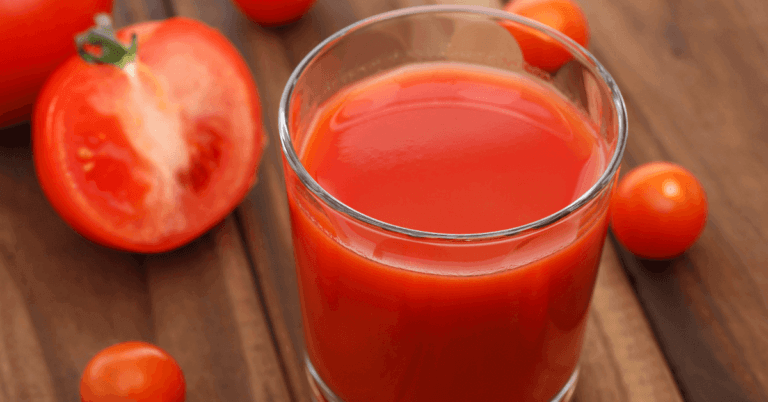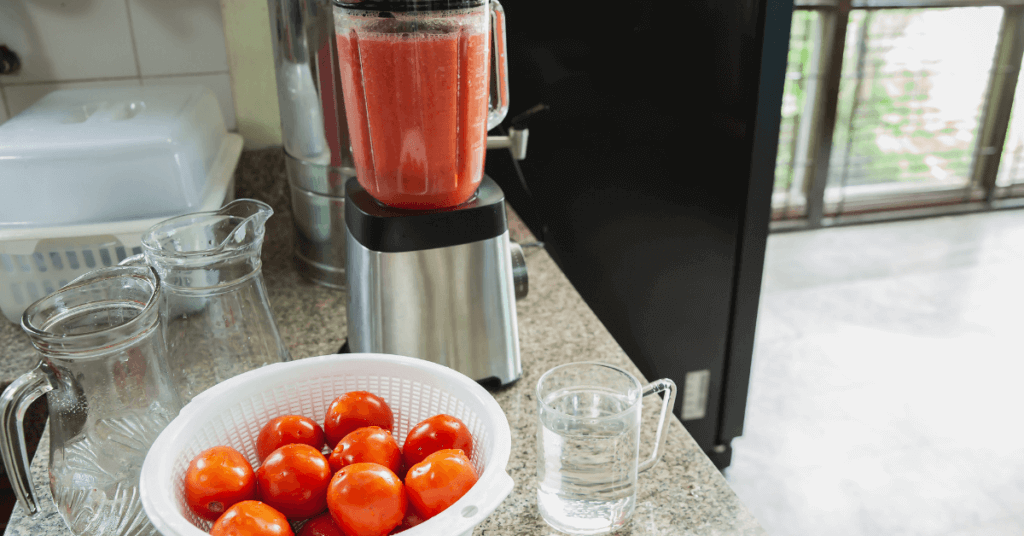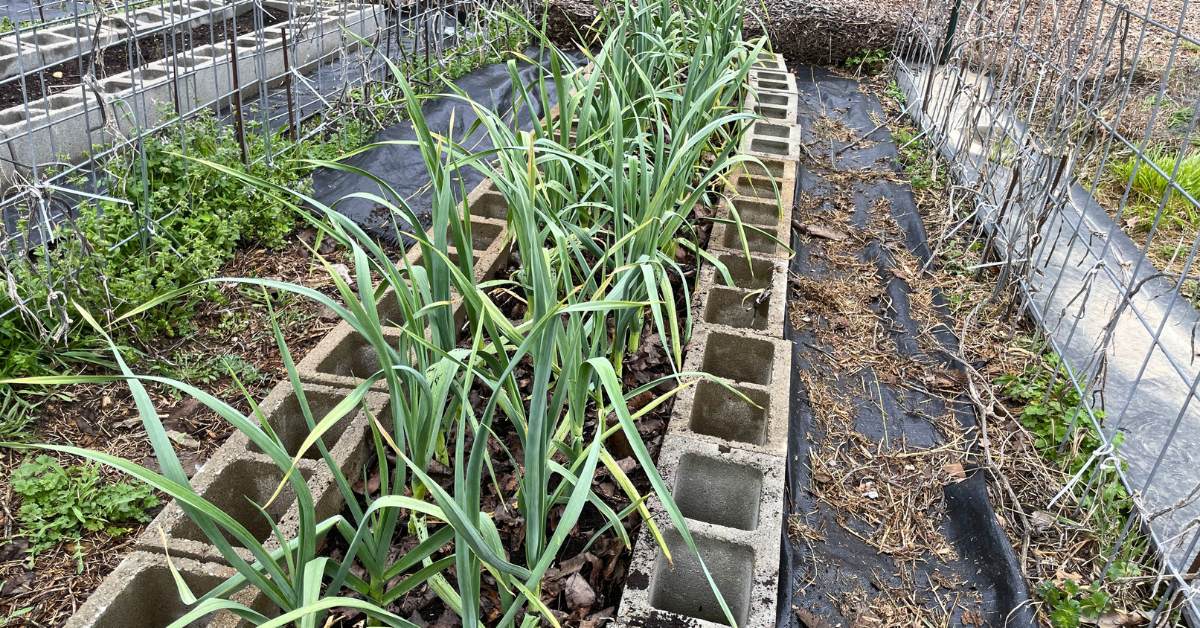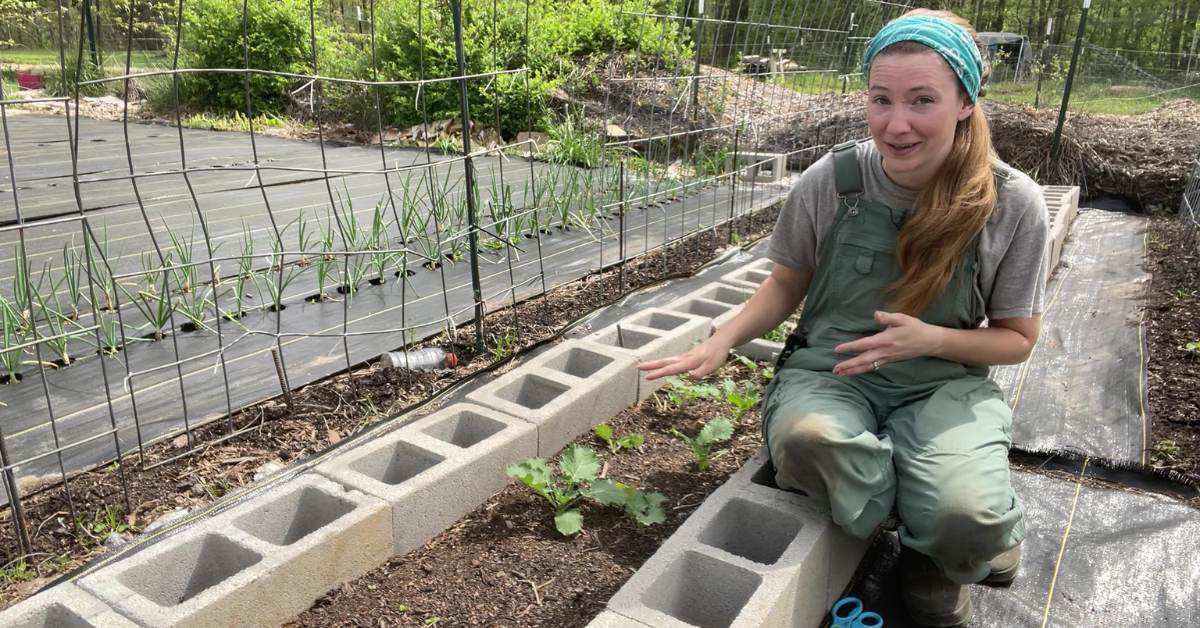Whether you’re faced with an especially abundant tomato harvest or simply wish to eat healthier and homemade, learning how to make tomato juice in a blender is a no-brainer.
No need for special tools! With this common small appliance found in just about every household, it’s pretty straightforward to whip up a tall glass of fresh, homemade tomato juice.
That way, you can drink your veggies (fruit?) and still get the same health benefits as eating them whole.
If you make more than you can drink in one sitting, try using the juice in soup bases or to thin overly condensed stews and chilis.
Can You Make Juice in a Blender?
While connoisseurs may prefer other tools, such as food mills, food processors, and juicers, you can certainly use a blender for tomatoes.
The process is slightly different for each type of appliance, so we’ll talk about the right method of producing tomato juice for a blender.
The main thing to keep in mind when blending tomatoes to create fresh tomato juice is the need for added water at the beginning of the blending process.
Benefits of Homemade Tomato Juice Over Store-Bought
Store-bought juice has nothing over making old fashioned tomato juice at home. By making your own tomato juice in a blender instead of buying canned juice, you’ll reap numerous benefits.
- You won’t be drinking the preservatives contained in store bought juice.
- Because your juice is fresh, you’ll need less sugar than what manufacturers include. The natural sweetness of tomatoes is far more apparent when consumed fresh.
- If you’re diabetic or on a low-carb diet, you can use artificial sweeteners such as stevia so there’s no added sugar in your tomato juice. The carbohydrate content will be easier to control.
- You’ll be able to adjust the sodium levels to your liking or dietary needs.
- Knowing the ingredients in your juice and the conditions in which it was processed means you don’t have to worry about food allergies and unexpected contaminants.
- Homemade tomato juice allows you to combine spices and flavorings to your taste. You can also control the overall consistency.
- Tomato juice produced at home, even if you must freeze it, preserves its vitamins better than the heavily processed juice in the store.
- And, finally, homemade tomato juice just plain tastes better. No metallic or chemical flavor.
How to Make Fresh Tomato Juice in a Blender
Like any recipe, there are differing opinions on how best to make juice in the blender. The two primary debate topics are:
- Skin vs. no skin
- Cooked vs. raw
To preserve all of the vitamins (and make less work!), we’re going to use the no-heat method and leave the skins on.
When crafting your tomato juice, remember that tomato juice from fresh tomatoes turns out the best.
Choose tomatoes you’d enjoy eating au natural (the tomato, not you). They should be ripe but not overripe with no wrinkles or cracks in the skin.
Local, in-season, and organic will be the tastiest.
The juiciest varieties are the beefier types, as well as romas and plum tomatoes. You can use other varieties but may need more to get the same amount of juice.
Grape tomatoes aren’t the best fit for juice making. If you have an abundance, try dehydrating your cherry tomatoes instead. You won’t be sorry!
Typically, it takes about 2 pounds of tomatoes to produce 3-4 cups of juice.
Begin by washing the tomatoes carefully.
We are using a no-heat method, but if you really don’t want to include the skin, you can quickly blanch the tomatoes in a hot water bath and remove the skin before blending.
After cleaning, remove the stem, and cut away any bruises or mold. If you prefer, you can also core the tomatoes, but it’s not necessary.
Then simply cut up the tomatoes and add them to your blender with some water. The amount of water will vary to your taste, but a blender does require some to get it moving well.
If you have a Vitamix (or an equally powerful blender), you can add the tomatoes whole.
Blend the tomatoes and water to the consistency you like, adding water if you want a thinner juice.
Once your tomato juice is blended, it’s time to strain it if you want to.
Straining is a matter of personal taste. If you left the skins on but don’t like lumps and/or if you don’t like seeds in your juice, use a cheesecloth, nut milk bag, or even a leg from a pair of clean pantyhose (remember those?!) to strain the juice from the pulp.
Add any other ingredients you wish to make your tomato juice your own. Here are a few suggestions:
- Sugar or honey
- Salt and/or black pepper
- Tabasco
- Celery/celery salt
- Peppers (bell, jalapeno, etc.)
- Onion/onion salt/onion powder
- Garlic/garlic powder
- Worcestershire
- Carrots
- Chili/cayenne/cumin
- Lime/lemon juice
- Basil
- Parsley
- Parmesan
- Cardamom
- Ginger
- Cilantro
- Apple/orange juice
- Spinach
- Bay leaf
The possibilities are mind-boggling. No boring V-8 for you!
Finally, chill your juice or pour it over ice and enjoy.
FAQs
Still not sure exactly how to go about juicing tomatoes at home? Below, we’ve answered a few questions you might have when making fresh tomato juice.
Can I freeze homemade tomato juice?
If you end up with more tomato juice than you can drink in a few days, you can certainly freeze it. In fact, freezing tomato juice is the ideal method of preservation. Freezing maintains the vitamins and health benefits of fresh better than canning.
To freeze tomato juice, it’s preferable to strain it first. This gives it a better consistency when thawed.
After straining, pour your juice directly into an airtight container, such as a Ziploc bag, glass jar, or hard-sided plastic freezer container.
Be sure to leave some empty space to provide room for expansion.
Alternately, you can pour it into silicone muffin tins or an ice cube tray if you plan to use only small amounts once thawed.
After it’s frozen into cubes, transfer it to an airtight freezer container.
Frozen tomato juice, if processed correctly, can last up to 18 months in the freezer.
When you’re ready to use it, thaw it in the fridge or run it under cold water.
If you want to stock your freezer with tomato products, I highly recommend trying freezer diced tomatoes.
Can you blend canned tomatoes to make tomato juice?
While not as healthy or tasty as using fresh tomatoes for juice, you can also use canned tomatoes.
This method is an option if you need tomato juice quickly but don’t have any on hand. It’s more about speed than producing quality juice.
To make tomato juice from canned tomatoes, simply blend them with water and strain the resulting juice.
Can you use a food processor to make tomato juice?
While a blender makes smoother juice, especially if it’s a high-quality blender such as a Vitamix, a food processor will also puree tomatoes well enough to pull the juice from them.
The best way to use juice from a food processor is to strain it, since there may be more chunks left in than you desire.
It’s also smart to feed the tomatoes into the food processor in smaller amounts (if your processor has a feeding attachment that allows you to do so).
How long will homemade tomato juice last in the fridge?
Homemade tomato juice is best used within 24 hours of juicing but can retain most of its flavor for about 3 days.
It should remain safe to use if stored in the fridge in an undisturbed airtight container for up to 7 days.
If you’re not sure you’ll be using the juice within a few days, it’s wise to go ahead and freeze it immediately. After all, it’s quick and effortless to thaw out when you need it.
If you’ve stored fresh juice in the refrigerator and aren’t sure how long it’s been in there or whether it’s safe to drink, look for these signs to tell if it’s gone bad:
- Sour odor or other odd smell
- Discoloration—it should stay bright red and will start to turn brown as it goes bad
- Mold
- Any kind of “off” taste
Can you make juice from tomato sauce?
Much like our canned tomato example above, it’s possible to make juice using tomato sauce but not ideal.
Tomato sauce is basically tomato juice with the water removed, so reconstituting your tomato sauce with some water and blending will produce usable (but not necessarily delicious) tomato juice.
To create small-batch, artisan-style juice that’s spiced, sweetened, and salted precisely the way you like it, it’s simple to make tomato juice with a blender.
Start with good tomatoes, decide on the consistency you prefer, and go ahead and try it. You’ll never go back to canned tomato juice!
Print
Simple Homemade Tomato Juice in a Blender
No juicer? No problem! You can whip up this homemade tomato juice in your blender within minutes. We've provided several ideas for delicious seasonings, but you can customize it to your liking.
- Total Time: 0 hours
Ingredients
- 2 pounds well-ripened tomatoes
- ½ – 1 tsp honey, sugar, or other sweetener
- 1/4 cup water (preferably distilled)
- ¼ cup celery, finely chopped
- 5–10 medium fresh basil leaves, minced
- 2 Tbsp red or green bell pepper, finely chopped
- ½ tsp salt
- Ground black pepper to taste
- 1–2 drops Tabasco (optional)
- Ice (optional – for serving)
Instructions
- Wash and remove bruises and blemishes from tomatoes.
- Blanch to remove skin (optional).
- Core (optional) and chop tomatoes into chunks.
- Add tomatoes and water to blender and blend until smooth.
- Add additional water as desired to achieve optimum consistency.
- Add remaining ingredients except for salt, pepper, and Tabasco. Blend to incorporate.
- Sample and add salt, pepper, and Tabasco to taste.
- Drink at room temperature, chill, or serve over ice.
Notes
2 lbs of tomatoes yields roughly 4 cups of juice.
- Prep Time: 5 minutes
- Additional Time: 0 hours
- Cook Time: 0 hours










